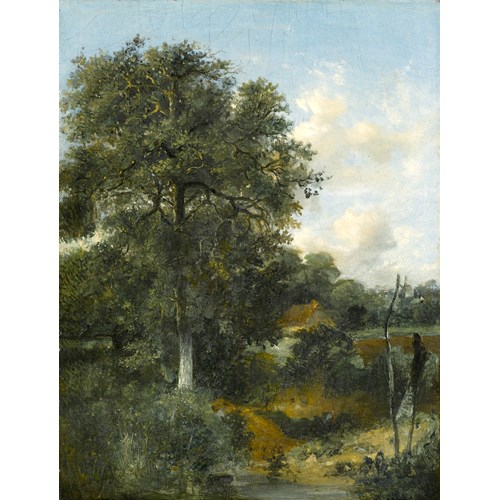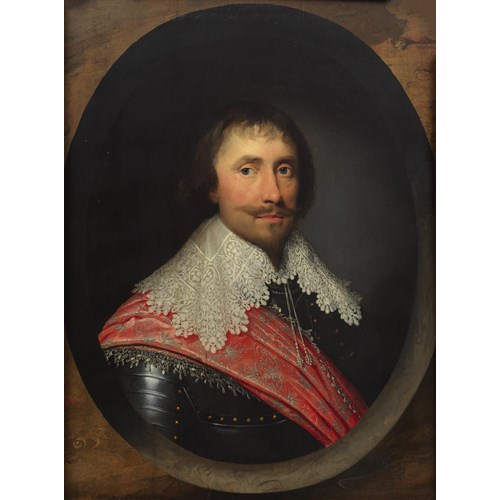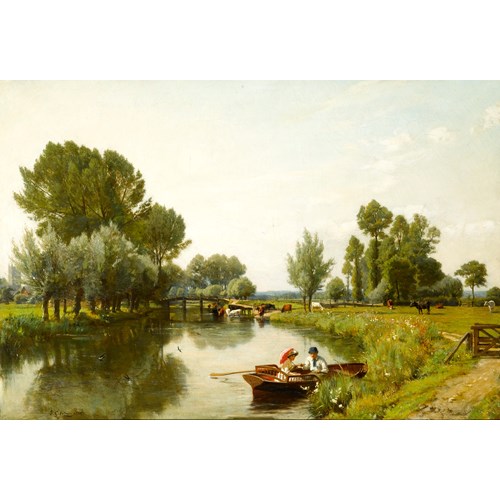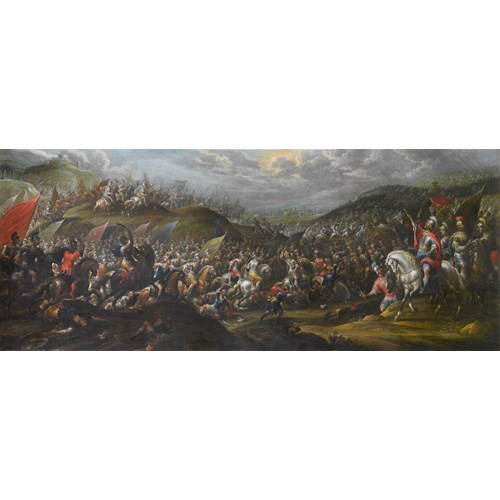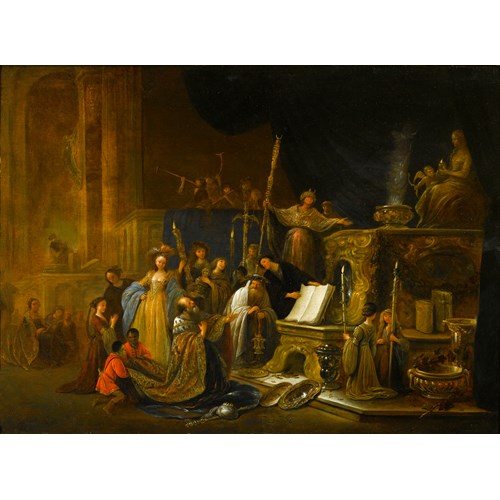Marketplace
Mounted Cossacks
Ludwig Gedlek
Mounted Cossacks
Period 1850-1900, 19th century
Origin Poland, Austria
Medium Oil on canvas
Dimension 32 x 64 cm (12⁵/₈ x 25¹/₄ inches)
The main theme of Ludwig Gedlek’s work is similar to the work of Joseph Brandt, who painted genre scenes from the life of the Cossacks, in particular the Ukrainian Zaporozhian Cossacks. In the nineteenth century numerous Polish painters took on Cossacks as their subject matter and they became a picturesque part of the iconography of European Romanticism. The history of Ivan Mazepa, the Cossack Hetman of the Hetmanate, for example, inspired Lord Byron’s poem Mazeppa (1818), Tchaikovsky’s opera of the same name (1881-1883) and Alexander Pushkin’s poem Poltava (1828-1829). For Polish artists, however, the Cossacks, in particular Zaporozhian Cossacks, assumed a special, symbolic significance.
The idea of Polish independence was one that was kept very much alive throughout the nineteenth century and led to several Polish uprisings against the partitioning powers of Russia, Prussia and Austria. Equally, the Zaporozhian Cossacks themselves had fought for their independence from the Polish-Lithuanian Commonwealth that had attempted to turn them into serfs, and then later began several uprisings against Russia which wanted to destroy their independent culture. Although their state eventually lost the autonomy granted to it after the Treaty of Pereyaslav (1654) and was then abolished by Empress Catherine the Great, the Zaporozhian Cossacks became associated with Poland in their representation of courage, love of adventure and above all a desire for freedom.
Gedlek’s Mounted Cossacks is quick to captivate the viewer, in the foreground we see four Cossacks on horseback contrasted with the numerous and distant cavalry behind. The leading figure appears to have spotted something and signals to the others in the troop to look over, however as the viewer cannot see what it is that lies beyond the stretch of water, and it is this sense of the unknown that provides great intrigue in this painting. The luminosity of the sky further adds a dramatic backdrop to this tense moment. The vegetation of the landscape is rendered in some detail and Gedlek pays particular attention to the costumes and weapons.
Gedlek began his artistic studies at the Krakow School of Fine Arts under the direction of W. Łuszczkiewicz. In 1863 Gedlek had his exhibiting debut at the Art Society in Krakow (TPSP), where he later exhibited several times. In 1873 he received a scholarship which enabled him to travel to Vienna, where he continued his studies at the Academy until 1877. There he studied under the Austrian artist Eduard Peithner von Lichtenfels (1833-1913), who was known for his skilled and fluid technique, which he combined with a poetic view and humour, and also under C. Wuerzinger, who was a painter of religious and historical subjects. Gedlek continued teaching in Vienna, and finally settled there on a permanent basis. He took part in numerous exhibitions in Poland with the Art Society in Krakow, Lviv, Warsaw and abroad in Dresden and Vienna. A master of oil painting, Gedlek depicted landscapes, mostly of the outskirts of Krakow, genre scenes, hunting scenes and historical battle scenes, which frequently included his preferred subject matter of horses.
The idea of Polish independence was one that was kept very much alive throughout the nineteenth century and led to several Polish uprisings against the partitioning powers of Russia, Prussia and Austria. Equally, the Zaporozhian Cossacks themselves had fought for their independence from the Polish-Lithuanian Commonwealth that had attempted to turn them into serfs, and then later began several uprisings against Russia which wanted to destroy their independent culture. Although their state eventually lost the autonomy granted to it after the Treaty of Pereyaslav (1654) and was then abolished by Empress Catherine the Great, the Zaporozhian Cossacks became associated with Poland in their representation of courage, love of adventure and above all a desire for freedom.
Gedlek’s Mounted Cossacks is quick to captivate the viewer, in the foreground we see four Cossacks on horseback contrasted with the numerous and distant cavalry behind. The leading figure appears to have spotted something and signals to the others in the troop to look over, however as the viewer cannot see what it is that lies beyond the stretch of water, and it is this sense of the unknown that provides great intrigue in this painting. The luminosity of the sky further adds a dramatic backdrop to this tense moment. The vegetation of the landscape is rendered in some detail and Gedlek pays particular attention to the costumes and weapons.
Gedlek began his artistic studies at the Krakow School of Fine Arts under the direction of W. Łuszczkiewicz. In 1863 Gedlek had his exhibiting debut at the Art Society in Krakow (TPSP), where he later exhibited several times. In 1873 he received a scholarship which enabled him to travel to Vienna, where he continued his studies at the Academy until 1877. There he studied under the Austrian artist Eduard Peithner von Lichtenfels (1833-1913), who was known for his skilled and fluid technique, which he combined with a poetic view and humour, and also under C. Wuerzinger, who was a painter of religious and historical subjects. Gedlek continued teaching in Vienna, and finally settled there on a permanent basis. He took part in numerous exhibitions in Poland with the Art Society in Krakow, Lviv, Warsaw and abroad in Dresden and Vienna. A master of oil painting, Gedlek depicted landscapes, mostly of the outskirts of Krakow, genre scenes, hunting scenes and historical battle scenes, which frequently included his preferred subject matter of horses.
Period: 1850-1900, 19th century
Origin: Poland, Austria
Medium: Oil on canvas
Signature: Signed and inscribed ‘L. Gedlek Wien’ (lower right).
Dimension: 32 x 64 cm (12⁵/₈ x 25¹/₄ inches)
More artworks from the Gallery




